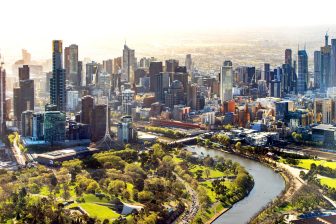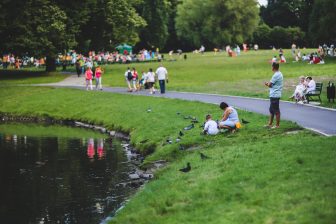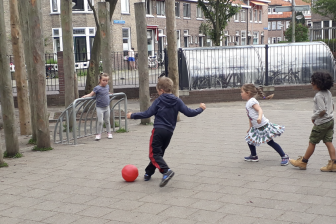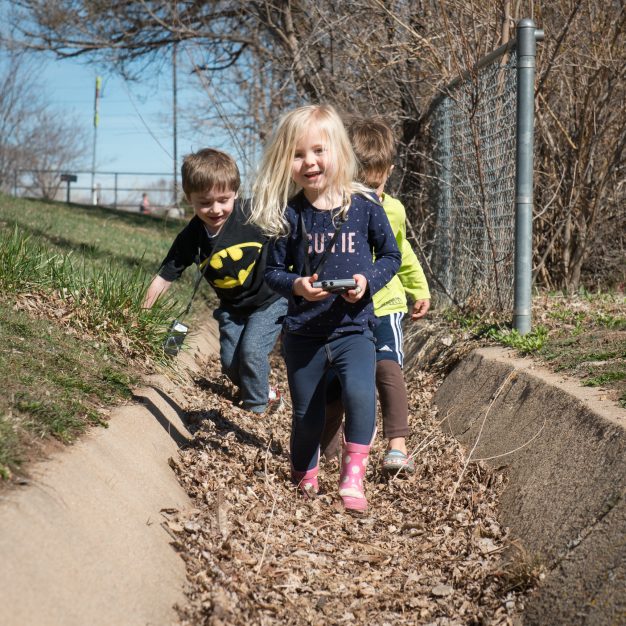
Walking Laboratories: Young Children’s Experience of the Street
Because of their small size, children and young people experience the street differently from adults. They more often enjoy the details of the streetscape that older people tend to overlook. When the City of Boulder in Colorado began its 19th Street corridor improvement planning, it wanted to consider all transportation user types – and ages. Young people’s perspectives have therefore been highlighted as an important consideration for public engagement in this process.
Walking Laboratories is a collaborative project of Walk2Connect, GO Boulder, Growing Up Boulder (GUB), and the Boulder Valley School District to bring young people’s voices to multimodal transport planning. Walking Laboratories has used GUB’s adaptations of photovoice for young people to document their likes and dislikes of the built environment and the walkability of this corridor.
Children’s rights to active citizenship
Boulder Journey School is a pre-kindergarten school for the under-6s and is located within the 19th Street study area. In partnership with Growing Up Boulder, Boulder Journey School promotes children’s rights to active citizenship and supports participatory design and planning with their young students. The teachers and students (ages 1-4) participated in the Walking Laboratories project – with an emphasis on what they enjoyed and what made them feel unsafe on the street. On average, a kindergartener stands 114 cm tall. Because of this short stature, young children literally see the world differently. At 114 cm, cars seem massive; trash or other obstructions may stand out more than for older people. This unique point of view allows children to design the built world differently, as shown in their observations below.
In this process, young children enjoyed:
• construction spray paint on the street for its colours and variations;
• a variety of textures on the environment: grass, cement, gravel;
• play affordances at different heights – children enjoyed playing in the water ditch, stepping down off the sidewalk, climbing onto the median; and
• places to stop and safely explore the built environment
Students did not appreciate signs of neglect and waste, such as:
• trash along the street (they wanted to stop and pick it up);
• graffiti on street signs;
• dog excrement;
• street signs that were knocked over; and
• cracked sidewalks
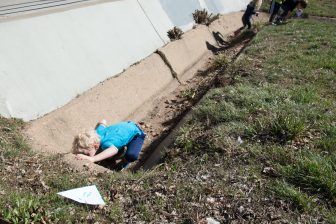
Children’s desire for greater exploration
Students also identified challenging street crossings and wanted a walking route that would visually connect the schools – from preschool through elementary and intermediate – that are clustered in the area. One of the most important findings from these walks was children’s desire to slow down, stop, and experience the environments before them. Young children wanted to see design and enhancements of the street that allow greater exploration and play. These could be additions or improvements to art (at eye level), natural play spots, or places to observe nature and wildlife. Other cities, such as Odense, Denmark, have encouraged play routes to facilitate playful journeys. The Walking Laboratories project helped identify spots to enhance or preserve, and young children gave rich detail for a variety of sensory experiences that could be provided.
Walking Laboratories is an additional engagement method to add to the repertoire of techniques already used to gather young children’s perspectives and articulate their recommendations. From this project, tangible recommendations were produced that will be presented to city decision makers, with the hope that young children’s perspectives can improve not only the walkability of the corridor, but also the quality of interactions with the physical and natural environments.
Authors: Morgan Huber & Victoria Derr
Photo Credit: Photo by Boulder Journey School


